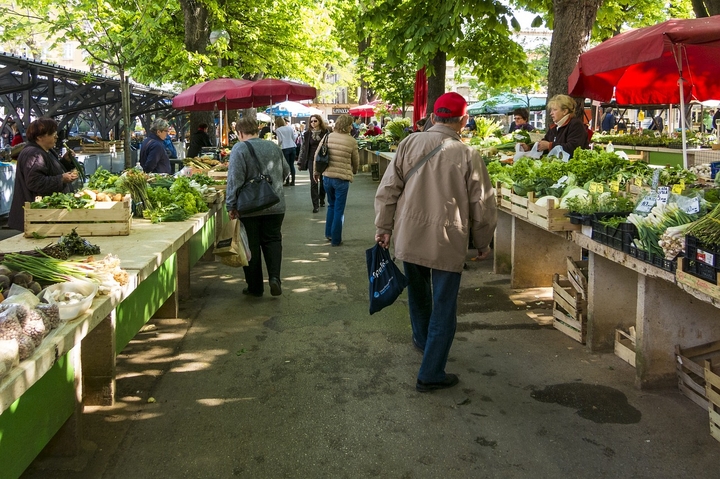
When you're looking for a property, your reflexes are often the same: you filter by surface area, price, number of bedrooms, floor, orientation, presence of an exterior. We project ourselves into the flat or house. But what many people forget is that the living environment is not limited to the walls of the home. An ideal flat in a neighbourhood that doesn't meet your expectations can quickly become a source of frustration.
Conversely, a home with room for improvement in a pleasant environment can prove to be an excellent choice in the long term. After all, what you experience around you counts just as much as what you experience at home.
The property market can be tight, so decisions are made quickly. Advertisements focus on the property itself, rarely on the neighbourhood. Even viewings are often quick, focusing on volumes, finishes and energy diagnostics.
A neighbourhood cannot be summed up in a note or a vague description. Many buyers make the mistake of finding out about the area after they've signed a compromis, sometimes even after they've moved in. That's often when disappointment sets in.
There are rankings and raw data: income, crime, accessibility, etc. But these indicators are no substitute for experience. A district may be 'well rated' but not suited to your specific needs. It may feel unsafe, isolated or noisy, but this does not show up in the statistics.
Hence the importance of relying on more detailed resources, closer to the ground, to avoid relying solely on general averages.
Each district has its own dynamic. Some are very lively, others quiet or even sleepy. Some are inhabited by families, others by students, still others by retired people. All this creates an overall atmosphere that may or may not suit you.
And it's not always obvious at first glance. Sometimes you have to wander around a bit, looking at the shops, listening to the ambient noise, seeing how the locals behave, what activities keep the streets alive, and so on. It's a sensitive, personal approach that only time... or feedback from experience can provide.

A pleasant neighbourhood is also a functional neighbourhood. The presence of small shops, a bakery within walking distance, a market or a busy bus stop can greatly improve quality of life. But be careful: it's not just the presence that counts, it's also the quality and atmosphere of these services.
A shopping centre may be practical but impersonal, a small shop may be less well-stocked but more welcoming. Similarly, a park can be beautiful but not very busy, or very lively but noisy. So we need to go beyond a simple list of facilities.
The concept of safety is a tricky one. There are figures (number of offences, presence of CCTV, etc.) but these do not always reflect the real feeling of safety. Some neighbourhoods are wrongly stigmatised, while others enjoy a flattering image but have occasional problems.
The most reliable approach is to combine several sources: visits, local testimonials and specialist platforms. The MeilleursQuartiers website, for example, offers descriptions of neighbourhoods on a human scale, combining feelings, local context and testimonials. This kind of reading helps you identify areas to avoid (or rediscover), much better than a heat map or impersonal classification.
A district that seems unattractive today may be undergoing major change: urban renewal, new transport links, the arrival of students, a change in population, etc. Similarly, a quiet district may lose its quality of life if it becomes overcrowded or too touristy.
Keeping abreast of upcoming projects, PLUs, current renovations and scheduled demolitions will help you to plan ahead. Here again, contextual descriptions are invaluable, as they give meaning to the raw data.
In addition to personal visits and impressions, there are now a number of sites that provide a more human perspective on the area. Forums, local blogs and neighbourhood groups on social networks are just some of the possibilities. But they're not all the same.
Some projects stand out for their qualitative approach. On MeilleursQuartiers.com, you won't find long technical analyses, but very concrete descriptions that speak to the daily lives of the residents. This is useful for narrowing down a choice, or simply for avoiding surprises.
Residents' opinions are sometimes useful, but often biased. A happy resident will tend to value his neighbourhood, another to exaggerate its faults. The secret lies in the diversity of testimonials, in their nuance, in specific examples. A good neighbourhood article will talk about both the positive points and the limitations. It will talk about the social realities, the built environment, the atmosphere, without judging.
That's why it's essential to read several sources carefully.
Buying a property means investing in a place, an atmosphere and a quality of life. By spending a little time understanding the local dynamics, you reduce the risk of regret and increase your chances of feeling good for the long term. It's not a question of becoming an expert in town planning, but simply of being curious, observant, and looking for what you're not always shown.